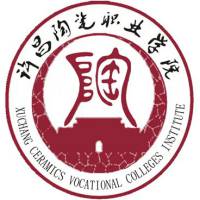Xuchang Ceramics Vocational College is located in Xuchang City, Henan Province. It was founded in 2010. It is a full-time general higher vocational college approved by the Henan Provincial People's Government and registered by the Ministry of Education. The school is located in the heart of the Central Plains, with beautiful environment and convenient transportation. It is close to the Beijing-Hong Kong-Macao Expressway, Light Rail Line 17, and Xuchang High-speed Railway Station. It is a 40-minute drive from the provincial capital Zhengzhou and only 30 minutes from Xinzheng International Airport. The school fully implements the party's education policy, adheres to the socialist direction of running schools and the principle of public welfare. Over the past ten years, it has been rooted in Xuchang, facing Henan, and radiating across the country. It has cultivated tens of thousands of high-quality technical and skilled talents for the society and has made positive contributions to local economic construction and social development. The school has two campuses in Xuchang City, south and north, with a total planned area of more than 1,000 acres. It has built basic facilities such as libraries, training centers, standardized sports fields, and lecture halls. The library has more than 200,000 books and teaching equipment with a total value of tens of millions of yuan. There are more than 10,000 full-time students and more than 700 faculty members, including nearly 500 full-time teachers, 61% of whom have a master's degree or above, 27% have associate senior professional titles or above, and 48% have dual-qualified teachers. After more than ten years of hard work, the school has formed a professional layout with engineering as the main focus, covering the coordinated development of multiple disciplines such as literature, science, economics, management, art, education, and agriculture. There are 10 departments including the Department of Business Administration, the Department of Economics and Trade, the Department of Construction Engineering, the Department of Design and Art, the Department of Ceramic Engineering, the Department of Information Engineering, the Department of Mechanical and Electrical Engineering, the Department of Transportation, the Department of Humanities Education, and the Department of Art Performance, with more than 40 majors. The school continues to deepen the integration of production and education, school-enterprise cooperation, jointly build majors and courses with many well-known companies, build a practical teaching platform, provide teacher training, and build an education system of "classroom teaching-practical teaching-skill training-guidance and assistance-innovation training". Implement the 1+N certificate model, establish a smooth employment channel, and cultivate a group of application-oriented talents with strong practical ability, high technical skills, and strong innovation awareness. The school is based on the actual situation of local higher vocational colleges, transforming regional resources into school resources, economic advantages into development advantages, local characteristics into disciplinary characteristics, closely connecting with industry and industrial needs, and highlighting its characteristics in serving and leading local economic and social development. The school actively explores the laws of education and teaching for junior college to undergraduate, reforms teaching methods, innovates education and teaching models, strongly supports students to improve their academic qualifications, establishes cooperative relationships with many undergraduate colleges, broadens the channels for students to upgrade from junior college to undergraduate, and strives to build the school into a junior college to undergraduate education brand. Focusing on the talent training goal of "focusing on moral education, strengthening skills, being able to practice, and casting craftsman spirit", the school strengthens connotation construction, actively adapts to social needs, and serves local economic and social development. Give full play to its own disciplinary and professional characteristics, increase talent training efforts, build a high-level dual-teacher team, build a special professional group, promote the high-quality development of the school, strive to create a high-level vocational college, and lead the development of vocational education in a new era.
-

Tsinghua University
-

Peking University
-

Fudan University
-

Wuhan University
-

Zhejiang University
-

Nanjing University
-

Sun Yat-sen University
-

Tongji University
-

Renmin University of China
-

Jahrom University of Medical Sciences
-

Mesoamerican University
-

Istmo University
-

Mariano Galvez University of Guatemala
-

Regional University of Guatemala
-

Galileo University
-

Francisco Marroquín University
-

Rafael Landívar University
-

University of the Valley of Guatemala
-

University of San Carlos of Guatemala
-

Technological Institute of Tlaxcala Plateau
-

Golfo University
-

Technological University of South Sonora
-

Technological University of Huejotzingo
-

Tizimín Institute of Technology
-

Chilpancingo Institute of Technology

